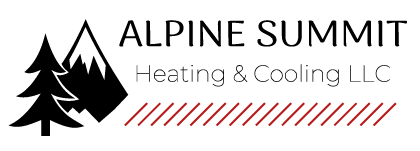
A furnace is usually a background player in your home, helping keep you warm during the cold winter months. It regularly doesn’t get noticed until something breaks down.
One source may be that your furnace has a cracked heat exchanger. It can potentially be hazardous, so it’s important to learn the symptoms of a cracked heat exchanger and what you should do if you believe that may be the problem.
What Is a Heat Exchanger in a Furnace?
A heat exchanger helps move heat from the combustion chamber of your furnace to the air that moves through the ventilation. It typically does this using coils or tubes that heat the air while serving as a barrier to keep the gasses created in the combustion chamber, called flue gasses, from getting out into your home.
Is a Cracked Heat Exchanger Dangerous?
Thanks to its central role, it shouldn't come as a surprise that a cracked heat exchanger can pose a risk. A crack in the heat exchanger can permit dangerous gasses – including carbon monoxide, which can be lethal – to be distributed throughout your home.
For that reason, do NOT use your heater if you believe it has a cracked heat exchanger, as letting it run could make your entire family sick. Contact an HVAC professional as soon as possible if you believe your furnace has a cracked heat exchanger that should be repaired.
Four Signs of a Cracked Heat Exchanger:
- Furnace shuts off: A cracked heat exchanger could cause your furnace to turn off.
- Odd Smells: If the air leaving your furnace has an intense chemical scent, it may be an indicator that gasses are leaking through cracks in your heat exchanger. These byproducts, which will often smell like formaldehyde, are a major warning sign.
- Carbon monoxide alarm initiates or you feel health problems: If a cracked heat exchanger is relieving carbon monoxide into your home, your carbon monoxide alarm should go off or family members could struggle with signs of carbon monoxide poisoning. Complications include headaches, dizziness, weakness, nausea, vomiting or feeling tired. If your alarm goes off or you feel sick, exit the home as soon as you can and then call for help.
- Soot: If you find black sooty accumulating near the exterior of your furnace, it’s an indication something might be seriously wrong.
What You Should Do if Your Furnace Heat Exchanger is Cracked
If you believe your furnace has a cracked heat exchanger, call a professional experienced in furnace installation Athol as soon as possible so they can inspect your system and, if necessary, start a furnace heat exchanger replacement. Costs will fluctuate depending on the situation, but estimates can roughly suggest $1,000 to $3,000.
Estimates aside, the good news is that heat exchangers are regularly included in the warranty. You should confirm the warranty paperwork on your furnace, because while the warranty might not cover the entire cost of repairs, it could significantly shrink your bill.
How to Prevent a Cracked Heat Exchanger in Your Home
One of the most convenient ways to minimize the risk of problems in your furnace overall is through regular furnace maintenance. Furnaces work the best when they operate efficiently. Contacting a certified professional to examine your furnace for old parts, clogs in the air filters and other common problems can keep you from getting a big bill later on.
It’s also a good idea to inspect your furnace filters every few months – it’s encouraged some filters be swapped out every 90 days or sooner if they are dirty or grimy. While the filters aren't connected to the heat exchanger itself, the strain of pulling air through a clogged filter makes your entire furnace work more vigorously to do its job. And the harder your furnace has to work, the more strain pieces like the heat exchanger will endure.




